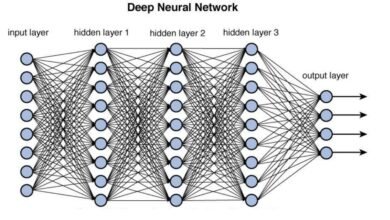Cloud Workload Protection Platforms: The Best Shield of Technology

As more and more businesses move their activities to the cloud, security becomes a top priority. Cloud Workload Protection Platforms (CWPP) are essential in safeguarding applications, data, and workloads in diverse cloud environments. CWPPs are designed to provide visibility, compliance, threat detection, and workload protection across various public, private, and hybrid cloud infrastructures.
Key Features of Cloud Workload Protection Platforms

1. Visibility and Insight
Visibility is the cornerstone of any robust security framework. CWPPs offer comprehensive visibility into cloud workloads, providing detailed insights into the assets, configurations, and activities within the cloud environment. This includes real-time monitoring and historical data analysis, enabling organizations to detect and respond to potential security threats swiftly.
2. Threat Detection and Response
A crucial function of CWPPs is threat detection. These platforms utilize advanced technologies such as machine learning, behavioral analysis, and signature-based detection to identify malicious activities. When a threat is detected, CWPPs can also automatically initiate a response to mitigate the risk, such as isolating affected workloads or blocking malicious traffic.
3. Compliance and Governance
Maintaining compliance with industry regulations and standards is critical for many organizations. CWPPs facilitate compliance by providing tools for continuous monitoring, audit readiness, and policy enforcement. They help ensure that workloads adhere to compliance requirements such as GDPR, HIPAA, and PCI-DSS, reducing the risk of costly fines and reputational damage.
4. Workload Protection of Cloud Workload Protection Platforms
Workload protection involves safeguarding applications and data against vulnerabilities and exploits. CWPPs offer features such as vulnerability scanning, application whitelisting, and runtime protection. These tools work together to prevent unauthorized access and protect against threats such as zero-day exploits and insider attacks.
Benefits of Implementing a Cloud Workload Protection Platforms

Enhanced Security Posture
Implementing a CWPP significantly enhances an organization’s security posture. By providing comprehensive visibility and then continuous monitoring, CWPPs help identify and mitigate security risks before they can also cause harm. This proactive approach to security is crucial in today’s threat landscape.
Cloud Workload Protection Platforms in Cost Efficiency
While investing in a CWPP may seem costly initially, it can also lead to substantial cost savings in the long run. By preventing security breaches and then ensuring compliance, organizations can also avoid the financial repercussions associated with data breaches, regulatory fines, and operational downtime.
Cloud Workload Protection Platforms Scalability
CWPPs are designed to scale with the organization’s needs. As businesses grow and their cloud environments become more complex, CWPPs can seamlessly adapt to provide consistent security across all workloads. This scalability ensures that security measures remain effective regardless of the size and complexity of the cloud infrastructure.
Operational Efficiency
By automating many security tasks, CWPPs enhance operational efficiency. Automated threat detection and response reduce the workload on IT teams, allowing them to focus on strategic initiatives rather than constant firefighting. This leads to improved productivity and more efficient use of resources.
Choosing the Right Cloud Workload Protection Platforms for Your Organization
Assessing Your Needs
Before selecting a CWPP, it’s crucial to assess your organization’s specific needs. Consider factors such as the size of your cloud environment, the types of workloads you need to protect, and your compliance requirements. This assessment will help you identify the features and capabilities that are most important for your organization.
Evaluating Features and Capabilities
Not all CWPPs are created equal. When evaluating potential solutions, look for key features such as:
- Comprehensive visibility and monitoring
- Advanced threat detection and response capabilities
- Robust compliance and governance tools
- Scalability and flexibility
Additionally, consider the ease of integration with your existing security tools and cloud platforms. A CWPP that seamlessly integrates with your current infrastructure will provide a more cohesive and effective security solution.
Vendor Reputation and Support
The reputation and support provided by the CWPP vendor are also critical factors to consider. Look for vendors with a proven track record of delivering reliable and effective security solutions. Additionally, ensure that they offer robust customer support and resources, such as training and documentation, to help you maximize the value of your CWPP investment.
Best Practices for Implementing a Cloud Workload Protection Platforms

1. Develop a Comprehensive Security Strategy
A CWPP should be part of a broader security strategy that encompasses all aspects of your cloud environment. This strategy should include policies and procedures for incident response, access management, and data protection. By taking a holistic approach to security, you can also ensure that all potential vulnerabilities are addressed.
2. Regularly Update and Patch Workloads
One of the most effective ways to protect your workloads is to ensure they are regularly updated and patched. CWPPs can also assist with this by providing automated vulnerability scanning and patch management tools. By keeping your workloads up to date, you can also significantly reduce the risk of exploitation.
3. Implement Least Privilege Access
According to the least privilege access concept, users should only be granted the minimal amount of access required to carry out their duties. This minimizes the risk of insider threats and limits the potential damage caused by compromised accounts. CWPPs can also help enforce least privilege access through identity and access management (IAM) tools.
4. Continuously Monitor and Audit
Continuous monitoring and then auditing are essential for maintaining security and compliance. CWPPs provide real-time monitoring and then alerting capabilities, allowing you to quickly identify and respond to potential security incidents. Regular audits help ensure that your security measures remain effective and compliant with industry standards.
The Future of Cloud Workload Protection Platforms
The threat landscape is going to change along with cloud environments. Emerging technologies such as containers and serverless computing present new security challenges that CWPPs must address. Future CWPPs will need to incorporate advanced capabilities such as AI-driven threat detection, behavioral analytics, and automated incident response to stay ahead of evolving threats.
Conclusion
In conclusion, Cloud Workload Protection Platforms are an indispensable component of a robust cloud security strategy. They provide the visibility, threat detection, compliance, and workload protection necessary to safeguard your cloud environment. By choosing the right CWPP and implementing best practices, organizations can also enhance their security posture, achieve compliance, and ensure operational efficiency.
Read more: Quantum Computing





